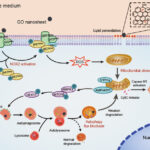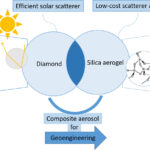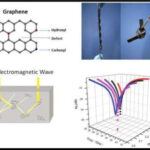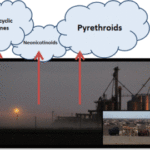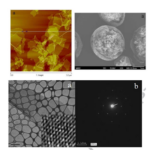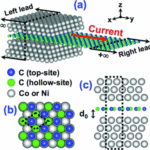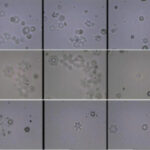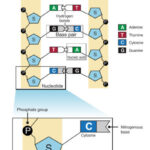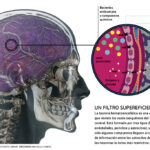January 23, 2025 Graphene, Neurocontrol, Scientific alternative studies
The 26 GHz band is key to the development of the so-called “Fourth Industrial Revolution”, i.e. the automation and integration of artificial intelligence into all industrial and manufacturing services and activities.
Graphene Oxide and 2G, 3G, 4G and 5G Electromagnetic Waves
Reference Study
Ameer, S.; Gul, IH (2016). Influence of reduced graphene oxide on effective absorption bandwidth shift of hybrid absorbers. PLoS One, 11 (6), e0153544. https://doi.org/10.1371/journal.pone.0153544
Introduction
Given the importance of the evidence already obtained in the past on the electromagnetic absorption of GO graphene oxide in the spectrum used in 5G technology, it becomes essential to investigate this topic further to understand what other regions of the electromagnetic spectrum might be absorbed.
The electromagnetic spectrum is the energy distribution of electromagnetic waves.
Absorption studies measure the “absorption spectrum” of the material, in this case GO graphene oxide.
To study the electromagnetic spectrum, it is usually divided into ranges/segments/bands that allow waves to be classified with their different frequencies according to their uses or applications.
A radio frequency band is a part of the frequency portion of the radio spectrum commonly used for radio communications, which facilitates tuning and prevents interference between the transmitter and receiver.
According to the information published, as far as the 5G radio spectrum is concerned, it is structured around the 700MHz bands (corresponding to 694-790MHz, a band lower than 1GHz, originally assigned to TV broadcasters transmitting in digital terrestrial), 1500MHz (intended for 5G, corresponding to 1427-1530MHz), 2600MHz, 2.6GHz and 26GHz (for “specific situations“).
Continuing the search for information on the 26GHz band, one discovers the existence of the 5G 2020 National Observatory and its report on 5G standardization and deployment.
It is noted that the limits of the band are set between 24.25 and 27.5 GHz, which is attributed with a high transmission speed but a range limited to a few kilometers.
In this publication, BEREC (Body of European Regulators for Electronic Communications) states that “it is expected that there will be general authorizations in the higher bands (66-71 GHz) and individual authorizations in the intermediate bands (26 GHz).
Until end-use environments are fully defined, secondary spectrum market mechanisms will provide greater flexibility to tailor authorizations to the specific needs of each market related to 5G services“.
This indicates that the intermediate 26 GHz bands will be authorized on a narrower basis.
Also of concern is the general authorization of the high bands from 66 to 71 GHz, given the well-known absorption capacity of graphene oxide mentioned above.
This suggests that the real spectrum revolution will occur when frequencies in the 26 GHz band are auctioned off, given the amount of unallocated spectrum still available.
Facts analyzed
Returning to the analysis of the study referenced for this entry, Ameer and Gul use a hybrid absorber nanomaterial consisting of NiFe₂O₄-rGO.
The reduced graphene oxide (rGO) allowed the NiFe2O4 ferrite compound to complete its absorption bandwidth and operate over a wider frequency range.
This is due to the nanomaterial’s magneto-dielectric properties, which allow for “high microwave absorption in the low-frequency range (mixed L- and S-bands), capable of covering its full bandwidth“.
The graphene sheets synthesized in the material “have a high oxygen content (about 42 percent) bound to individual carbon layers“.
This is particularly important when considering its interaction with the human body, given the damage it can cause through oxidation.
The material’s appearance under the microscope is shown in Figure 1.
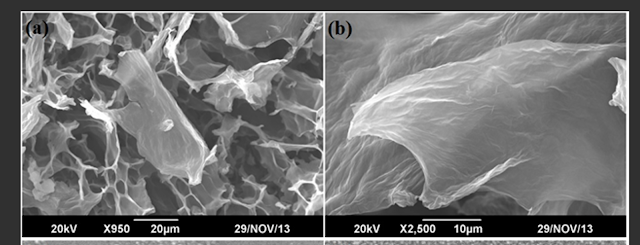
The article concludes that the NiFe₂O₄-rGO nanocomposite can operate in the 1 MHz – 3 GHz spectrum, which fits perfectly into the 5G electromagnetic spectrum as well as the 2G, 3G, and 4G bands.
The authors refer to the nanocomposite in the following way : “Microwave magneto-dielectric spectroscopy was performed in the low-frequency region in the 1 MHz-3 GHz spectrum.
The synthesized nanoparticles and hybrids were found to be highly microwave absorbing in all L and S radar bands (< -10 dB from 1 MHz to 3 GHz).
This excellent microwave absorption property, induced by the coupling of graphene sheets, demonstrates the applicability of these materials with an absorption bandwidth tailored to low frequencies“.
Other studies
1.(Zhang, D.; Chai, J.; Cheng, J.; Jia, Y.; Yang, X.; Wang, H.; Cao, M. 2018)
Materials studied : Molybdenum disulfide coated with MoS2/rGO reduced graphene oxide
Optimal operating frequencies : 4.64-18 GHz
Microscopy images :
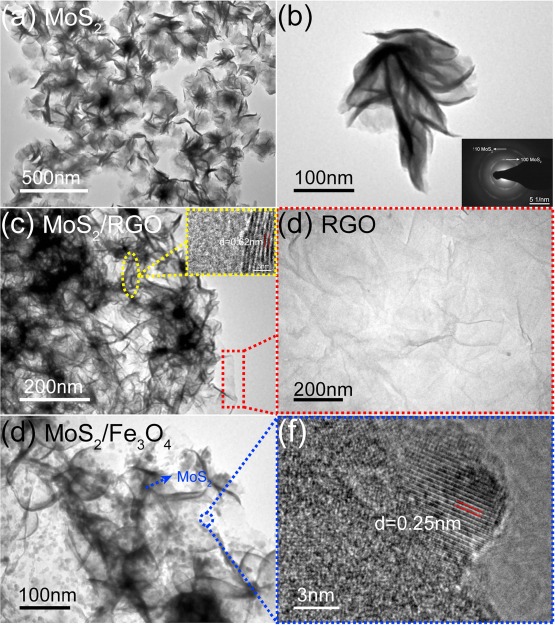
2.(Hu, J.; Shen, Y.; Xu, L.; Liu, Y. 2020)
Materials studied : Manganese dioxide coated with reduced graphene oxide MnO2/rGO
Optimal operating frequencies : 8-12 GHz
Microscopic images :
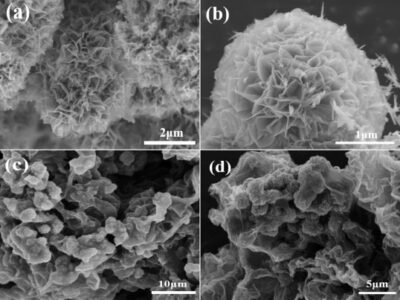
3.(Ren, F.; Zhu, G.; Ren, P.; Wang, K.; Cui, X.; Yan, X. 2015)
Materials studied : Cobalt ferrite filled with CoFe2O4/rGO reduced graphene oxide nanofilm
Optimal operating frequencies : 8-12 GHz
Microscopy images :
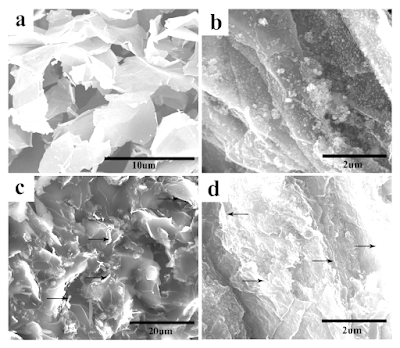
4.(He, L .; Zhao, Y .; Xing, L .; Liu, P .; Wang, Z .; Zhang, Y .; Du, Y. 2018)
Materials studied : lamellar carbonyl iron coated with reduced graphene oxide FCI/rGO
Optimal operating frequencies : 2-18 GHz
Microscopy images :
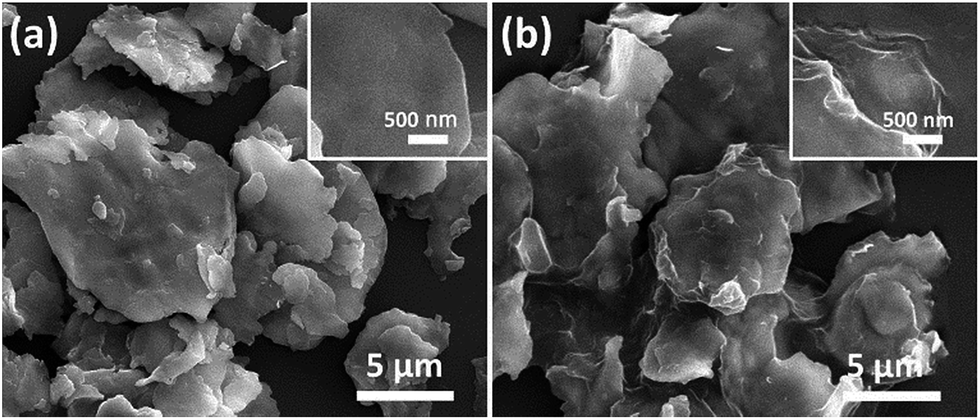
5.(Ma, E.; Li, J.; Zhao, N.; Liu, E.; He, C.; Shi, C. 2013)
Materials studied : Reduced graphene oxide coated with magnetic iron oxide rGO/Fe3O4
Optimal operating frequencies : 8-12 GHz
Microscopy images :
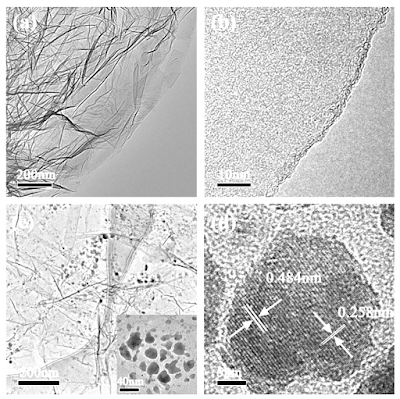
6.(Sudeep, PM; Vinayasree, S.; Mohanan, P.; Ajayan, PM; Narayanan, TN; Anantharaman, MR 2015)
Materials analyzed : GO graphene oxide, FGO fluorinated graphene oxide, HFGO highly fluorinated graphene oxide
Optimal operating frequencies : S-band (2 GHz to 4 GHz), X-band (8 GHz to 12 GHz)
Microscope Images :
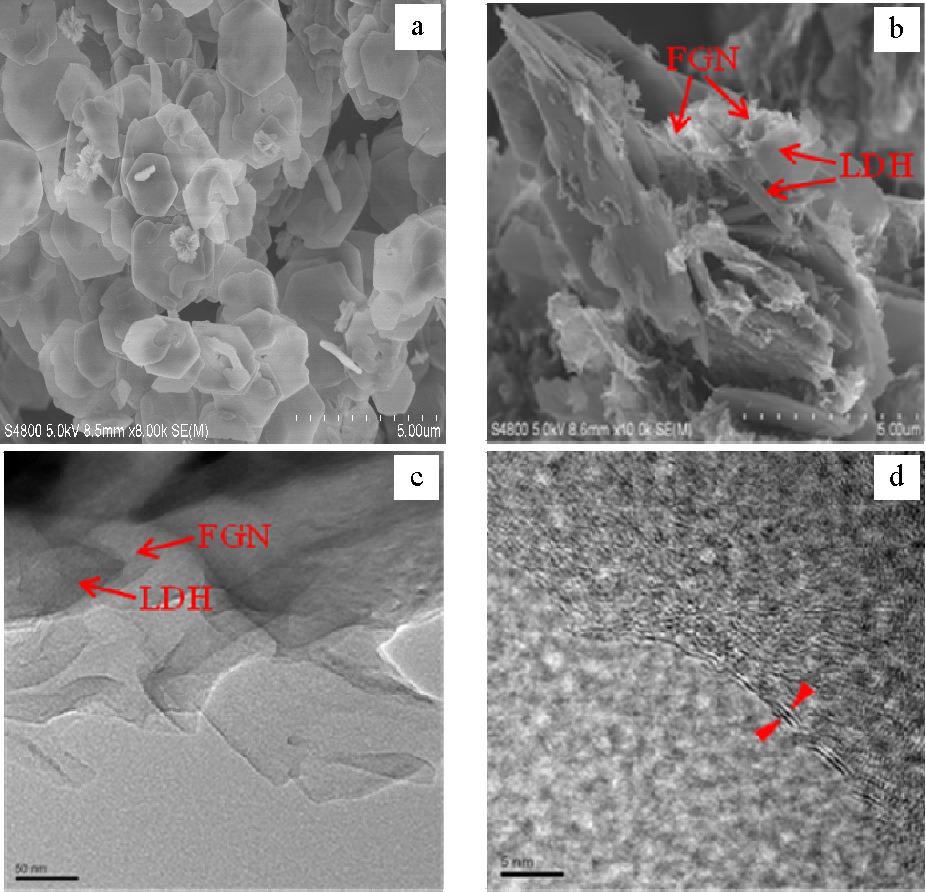
7.(Quan, L .; Qin, FX; Estevez, D .; Lu, W .; Wang, H .; Peng, HX 2019)
Materials analyzed : GO-s corrugated graphene oxide, GO-ms folded graphene oxide, GO-mg folded graphene oxide flower, GO-s-NG nitrogen-folded graphene oxide, GO-ms-NG nitrogen-folded graphene oxide, GO- mg-NG nitrogen-folded graphene oxide
Optimum operating frequencies : 2 GHz
Microscope Images :
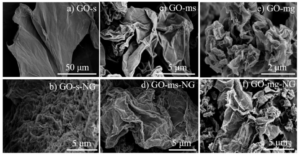
8.(Xu, Y.; Luo, J.; Yao, W.; Xu, J.; Li, T. 2015)
Materials analyzed : graphene oxide flakes reduced with carbonyl iron powder and rGO/F-CIP/PANI polyaniline
Optimal operating frequencies : 2-18 GHz
Microscopy images :
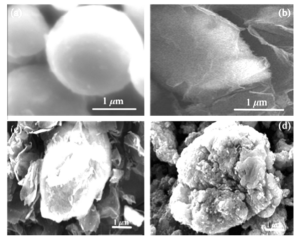
9.(Zhang, L.; Yu, X.; Hu, H.; Li, Y.; Wu, M.; Wang, Z.; Chen, C. 2015)
Materials analyzed : iron sulfate heptahydrate, iron sulfate heptahydrate (II) thermocombined with reduced graphene oxide FeSO4- 7H2O/rGO
Optimal operating frequencies : 2-18 GHz
Microscope Images :
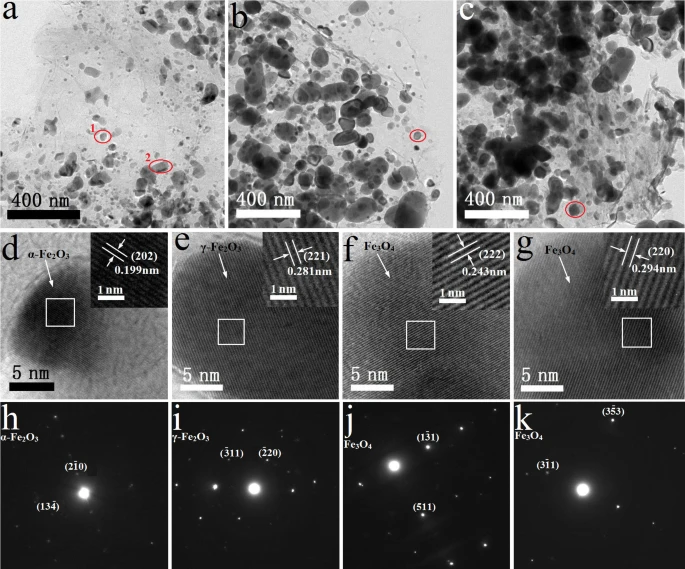
10.(Sun, X.; Sheng, L.; Yang, J.; An, K.; Yu, L.; Zhao, X. 2017)
Materials analyzed : Reduced graphene oxide combined with zinc oxide and barium ferrite 3D-RGO-ZnO/BaFe12O 19
Optimal operating frequencies : 5.8-11.52 GHz
Microscopy images :
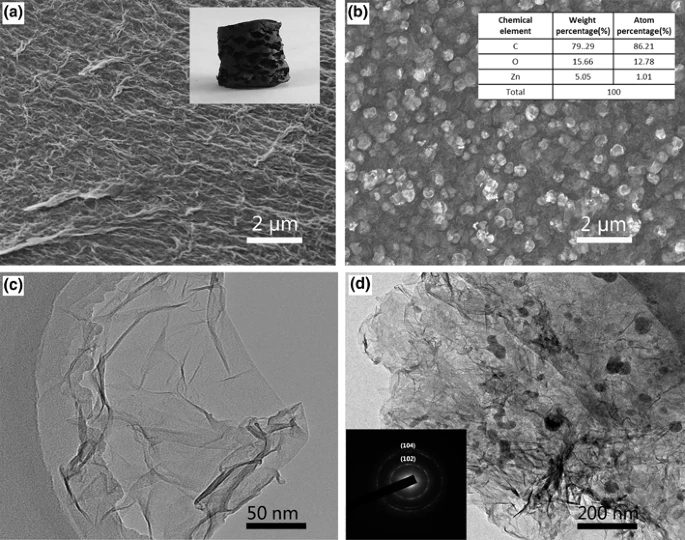
Final reflections
Nanocomposites based on GO graphene oxide and rGO reduced graphene oxide have been shown to have high electromagnetic wave absorption capacity in almost all emission ranges.
In the study by Ameer and Gul referred to in this post, the absorption is not limited to 5G bands, but also includes 2G, 3G and 4G technologies, with a range from 1 MHz to 3 GHz.
The rest of the cited studies show that GO graphene oxide itself has electromagnetic absorption properties, regardless of the compound or nanomaterial with which it is configured for its enhancement or amplification.
Therefore, it can be said that the inoculation of graphene oxide in so-called “vaccines” can cause the absorption of electromagnetic waves that cause cellular decomposition due to oxidative stress and the release of free radicals, generating body damage and adverse effects, as already explained in dozens of previous articles.
On the other hand, the interest of the scientific community in this field of research is shown by the 884 results found on Google Scholar with the corresponding search, using the entries “reduced graphene oxide“, “absorption“, “bandwidth“, “MHz” and “GHz“.
According to reports on the subject, the 26GHz band is critical to the development of the so-called “Fourth Industrial Revolution“, or the automation and integration of artificial intelligence into all industrial and manufacturing services and activities.
Interestingly, the 26GHz frequency is explicitly mentioned by (Chen, Y .; Fu, X .; Liu, L .; Zhang, Y .; Cao, L .; Yuan, D .; Liu, P.. 2019) in their article on the electromagnetic absorption properties of 5G, which also proves to be suitable for remote neuromodulation, as stated by (Li, X .; Xiong, H .; Rommelfanger, N .; Xu, X .; Youn, J .; Slesinger, PA; Qin, Z. 2021).
This ensures the ability of virtual brain neuromodulation to all who have been inoculated with graphene oxide.
References
1.Chen, Y.; Fu, X.; Liu, L.; Zhang, Y.; Cao, L.; Yuan, D.; Liu, P. (2019). Millimeter wave absorbing property of flexible graphene/acrylonitrile-butadiene rubber composite in 5G frequency band. Polymer-Plastics Technology and Material, 58 (8), 903-914. https://doi.org/10.1080/03602559.2018.1542714
2.He, L.; Zhao, Y.; Xing, L.; Liu, P.; Wang, Z.; Zhang, Y.; Du, Y. (2018). Preparation of reduced graphene oxide coated flaky carbonyl iron composites and their excellent microwave absorption properties. RSC advances, 8 (6), pp. 2971-2977.https://doi.org/10.1039/C7RA12984J
3.Hu, J.; Shen, Y.; Xu, L.; Liu, Y. (2020). Facile preparation of flower-like MnO2/reduced graphene oxide (rGO) nanocomposite and investigation of its microwave absorption performance. Chemical Physics Letters, 739, 136953. https://doi.org/10.1016/j.cplet.2019.136953
4.Li, X.; Xiong, H.; Rommelfanger, N.; Xu, X.; Youn, J.; Slesinger, PA; Qin, Z. (2021). Nanotransducers for wireless neuromodulation. Matter, 4 (5), pp. 1484-1510. https://doi.org/10.1016/j.matt.2021.02.012
5.Ma, E.; Li, J.; Zhao, N.; Liu, E.; He, C.; Shi, C. (2013). Preparation of reduced graphene oxide/Fe3O4 nanocomposite and its microwave electromagnetic properties. Materials Letters, 91, pp. 209-212. https://doi.org/10.1016/j.matlet.2012.09.097
6.Peng, W.; Li, H.; Song, S. (2017). Synthesis of Fluorinated Graphene/CoAl-Layered Double Hydroxide Composites as Electrode Materials for Supercapacitors. ACS applied materials & interfaces, 9 (6), pp. 5204-5212. https://doi.org/10.1021/acsami.6b11316
7.Quan, L.; Qin, FX; Estevez, D.; Lu, W.; Wang, H.; Peng, HX (2019). The role of graphene oxide precursor morphology in magnetic and microwave absorption properties of nitrogen-doped graphene. Journal of Physics D: Applied Physics, 52 (30), 305001. https://doi.org/10.1088/1361-6463/ab1dac
8.Ren, F.; Zhu, G.; Ren, P.; Wang, K.; Cui, X.; Yan, X. (2015). Cyanate ester resin filled with graphene nanosheets and CoFe2O4-reduced graphene oxide nanohybrids as a microwave absorber. Applied Surface Science, 351, pp. 40-47.https://doi.org/10.1016/j.apsusc.2015.05.101
9.Sudeep, PM; Vinayasree, S.; Mohanan, P.; Ajayan, PM; Narayanan, TN; Anantharaman, MR (2015). Fluorinated graphene oxide for enhanced S and X-band microwave absorption. Applied Physics Letters, 106 (22), 221603.https://doi.org/10.1063/1.4922209
10.Sun, X.; Sheng, L.; Yang, J.; An, K.; Yu, L.; Zhao, X. (2017). Three-dimensional (3D) reduced graphene oxide (RGO)/zinc oxide (ZnO)/barium ferrite nanocomposites for electromagnetic absorption. Journal of Materials Science : Materials in Electronics, 28 (17), pp. 12900-12908.https://doi.org/10.1007/s10854-017-7120-2
11.Xu, Y.; Luo, J.; Yao, W.; Xu, J.; Li, T. (2015). Preparation of reduced graphene oxide/flake carbonyl iron powders/polyaniline composites and their enhanced microwave absorption properties. Journal of Alloys and Compounds, 636, pp. 310-316.https://doi.org/10.1016/j.jallcom.2015.02.196
12.Zhang, D.; Chai, J.; Cheng, J.; Jia, Y.; Yang, X.; Wang, H.; Cao, M. (2018). Highly efficient microwave absorption properties and broadened absorption bandwidth of MoS2-iron oxide hybrids and MoS2-based reduced graphene oxide hybrids with Hetero-structures. Applied Surface Science, 462, pp. 872-882. https://doi.org/10.1016/j.apsusc.2018.08.152
13.Zhang, L.; Yu, X.; Hu, H.; Li, Y.; Wu, M.; Wang, Z.; Chen, C. (2015). Facile synthesis of iron oxides/reduced graphene oxide composites : application for electromagnetic wave absorption at high temperature. Scientific reports, 5 (1), pp. 1-9.https://doi.org/10.1038/srep09298

